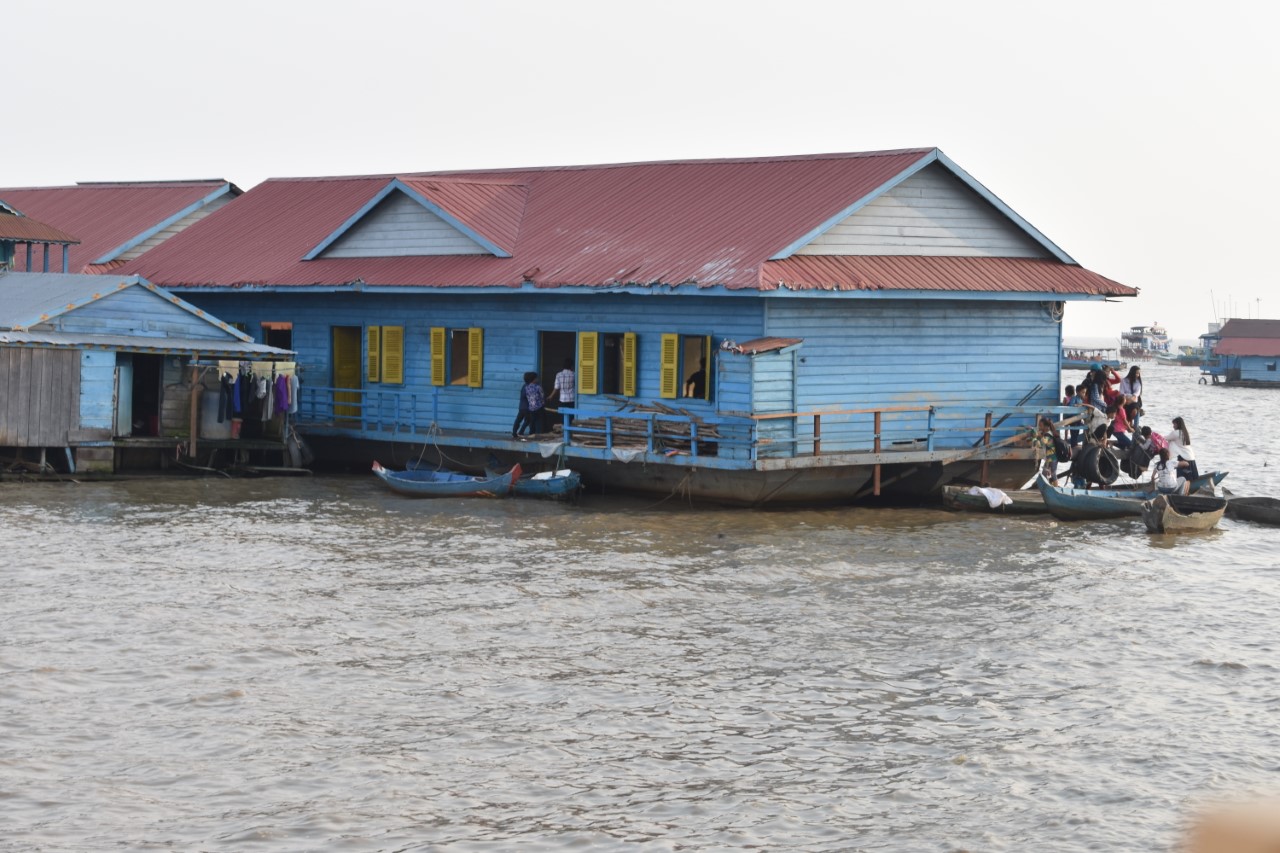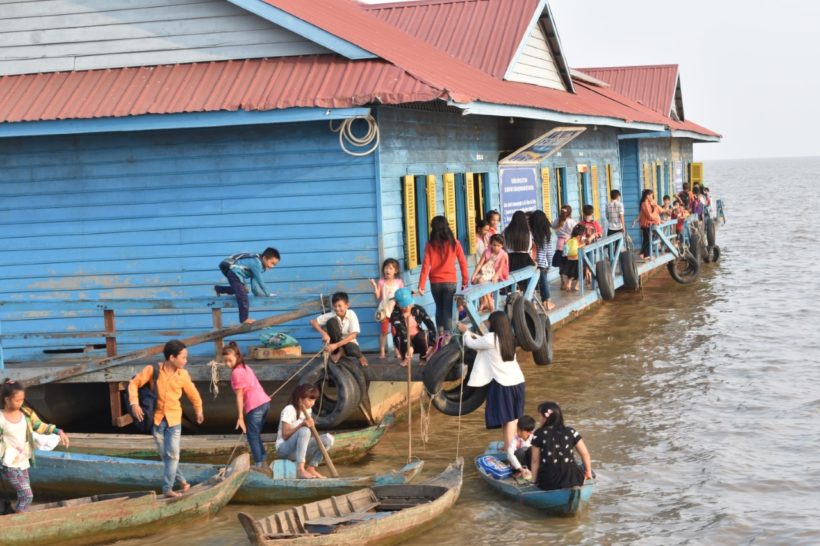 By MIRIAM ACZEL
By MIRIAM ACZEL
For many years, experts have been warning of an ‘environmental crisis along the nearly 3000 mile-long waterway, which spans six Asian countries—Cambodia, Vietnam, Thailand, Laos, China and Myanmar. Experts have long expressed concern that the Mekong River could not survive the dam building, overfishing, and sand mining operations forever. However, the Mekong River has so far withstood the onslaught of human activity, supporting the livelihoods of over 60 million people who depend on its precious resources.
However, in 2019 there was a drastic change: first, the critical monsoon rains that were expected in late May did not arrive, and as a more and more severe drought plagued the watershed, the water levels in the Mekong River hit record lows not reached in more than a century. Arid conditions, which were driven by the El Niño weather patterns and further aggravated by climate change, continued well into late July, and according to National Geographic reporting, the situation was exacerbated by hydropower dam operators upstream, in both China and Laos, withholding water resources.
And when the monsoon rains finally began to fall in late July, they were weaker than usual, and the devastating drought persisted. Experts cautioned that the potential damage from the drought could be worse than the one experienced in 2016, when a persistent drought led to wildfires around the Tonle Sap Lake in Cambodia and caused massive disruptions to food production. According to Brian Eyler, the Southeast Asia program director at the Washington DC-based Stimson Center, “with the completion of more mainstream dams and the cumulative effects of climate change, that tipping point” of the Mekong’s ability to withstand changes “may be coming closer.”
Unprecedented Low Levels
And since then, additional issues have begun to be evidenced. In the northern part of the river, in some places the Mekong has nearly stopped flowing. Moreover, the water has changed to a darker color and has begun to fill up with algae blooms. Fish stocks from the planet’s largest inland fishery have drastically diminished, and the few fish that are caught are so small and undernourished that they can only be used to feed other fish.
According to Zeb Hogan, fish biologist at the University of Nevada, Reno, “everywhere you look there are indications that this river, which has provided for so many, for so long, is at a breaking point.”
In October of last year, in the Northern Thai province of Nakhon Phanom, water levels were recorded at below 5 feet—the lowest in over a century. And this record low led to sand dunes becoming exposed along the river, disrupting fishing and cargo vessel traffic.

Variations in Water Availability: Ebbs and Flows
According to UNESCO, the livelihood and food security of the Lower Mekong Basin’s 60 million people is threatened by rapidly changing variations in water availability, exacerbated by increasingly unpredictable seasons and rising temperatures. Droughts can damage agricultural productivity and can even render massive areas infertile. UNESCO’s International Hydrological Programme (IHP) is working to find solutions for pressing water management challenges in the Lower Mekong Basin through multiple initiatives, including through the mapping of groundwater and sediment flows as well as through assessing climate change vulnerability.
While droughts are natural events, there is increasing acknowledgment of the role of human activity, including mismanagement of water movement and diversion of rivers and change in land use, in their severity becoming worse.
The Massive Reach of the Mighty Mekong
The longest river in South East Asia, and the12th longest in the world, the Mekong serves as a lifeline for the communities along its banks and tributaries. But water levels dropped to just 10% percent of its capacity for most of 2019—and residents argue that it is in large part due to large-scale damming projects.
Originating in the frigid waters high up in the Tibetan highlands, the Mekong River flows through China’s steep upper basin canyons, and then lower basin countries including Laos, Myanmar, Laos, Cambodia, and Thailand, before finally spreading across the expansive delta in Vietnam and ending up in the South China Sea.
The components of the massive river are so strongly interconnected that changes or alterations in one area can have significant impacts in other parts. It is highly productive—home to over 1,000 species of fish, with many as yet undiscovered—and depends on the seasonal floods that create ideal habitats for both fish and water birds, and also carry the rich sediment downstream that is necessary for agriculture.
Moving Forward: Protection of Precious Resources
However, the variable and natural ebb and flow of the Mekong is increasingly being interrupted due to the effects of hydropower dams as well as climate change. Environmental activists have argued that a large part of this interruption is due to operations within China–which operates 11 dams on the Mekong River. During times of extreme drought, China’s portion of the river contributes up to half of the river’s flow, with the dams withholding over 12 trillion gallons of water, and thus severely disrupting the water flow downstream.
Towards a Global Model of Cooperation
The issues raised are complicated by the fact that six countries depend on the crucial resources of the Mekong River. Moreover, because the livelihoods of millions of people in multiple countries are intrinsically tied to and dependent on the rich diversity of natural resources of the river, many indigenous legends and tales based on nature and the river’s resources have been passed down from one generation to the next. For example, in 2014, indigenous communities living within the Mekong Basin, in partnership with a group of researchers as well as the Japan-based advocacy organization Mekong Watch, began to record their oral tales and legends that relate to nature’s resources. Mekong Watch is devoted to furthering sustainable development in the Mekong River watershed, and established the ‘People’s Stories Project’ initiative to increase awareness of environmental risks of over-exploitation of natural resources, and protect the Mekong’s precious resources.
When facing environmental problems that cross national borders, we all benefit when solutions are shared across borders as well. Moreover, it is important to consider the cultural and historical importance of this massive river—and together we can move towards a sustainable and long-enduring solution.
Editor’s note: this article first appeared on the Amir Aczel Foundation’s blog
Miriam Aczel is a President’s Scholar PhD Candidate at Imperial College London’s Centre for Environmental Policy. Her research is on international energy science and policy, with a focus on mitigation of environmental and health impacts of shale gas, greenhouse gas removal technologies, and citizen science and public participation mechanisms. She is also co-founder and co-director of the Amir D. Aczel Foundation for Research and Education in Science and Mathematics, a nonprofit supporting educational programs in Cambodia and beyond.
Miriam is Director of Communications and blog editor for Leaders in Energy.



Leave a Reply